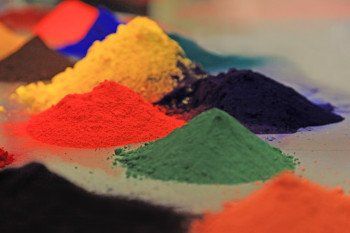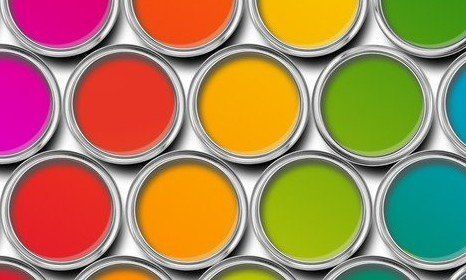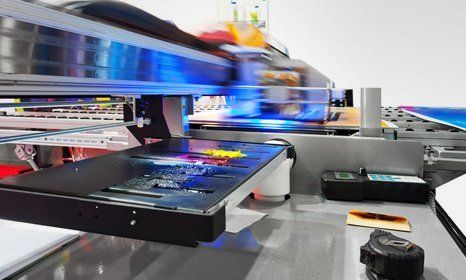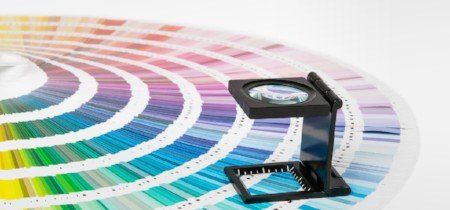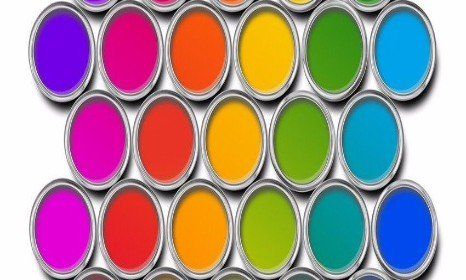The future of graphene ink
- By Centre Colours
- •
- 15 Oct, 2018
- •
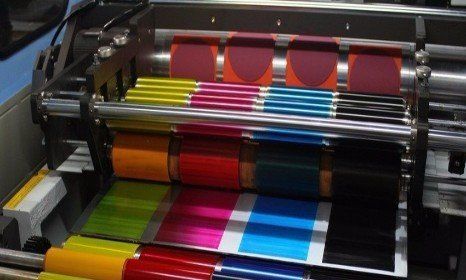
In the past decade, the production of ink has undergone an interesting shift. Technological advancements have seen changes to the production methods used to create ink, not to mention a fluctuation in the uses of ink and its qualities.
Traditionally, ink has been categorised into two groups: printing inks and writing inks. Writing inks are often composed with oil-based dyes, and are designed to have quick-setting properties for ease of use with pens and brushes. In contrast, printing inks are produced for use with printing methods, which can be categorised into conventional printing and non-impact printing. Conventional printing refers to the process of transferring an image or text from a plate to a surface, whereas non-impact printing produces an image without contact between the two surfaces. Examples of non-impact printing may include laser, thermal and inkjet printing technologies.
Today, however, ink can be used for more than just decoration. Recent improvements in technology - including the discovery of graphene - have led to the creation of a third type of ink. Conductive inks can, as their name suggests, facilitate the process of conductivity, and can be composed with precious metals such as silver, carbon and perhaps the most interesting material of them all, graphene. They can print information on materials in the same way that images and text can be printed on paper, which holds many possibilities for the future.
The production of graphene ink has been especially exciting for companies in the ink, paint and coating industry. The future of ink is changing, and the potential applications of graphene ink could be huge. Here we will discuss the properties, uses and potential applications of graphene ink, and what it could mean for many industries worldwide.
What is graphene?
In 2004, researchers at Manchester University were successful in discovering and isolating graphene, a form of carbon with many fascinating qualities. It’s a single layer of graphite, which is known for being the very soft material used in pencils.
Despite this, graphene - which is just one atom thick - is the strongest material researchers have ever tested. This is owed to its intricate hexagonal lattice structure, making it an incredible 200 times stronger than steel. Unlike other metals, graphene can also be stretched in size without shattering or becoming brittle. This makes it an extremely versatile and durable material, which has exciting possibilities for many different sectors across the globe.
Graphene is also one of the best conductors of heat and electricity. Its two-dimensional atom structure allows electrons to travel quickly and efficiently without resistance, making it a much better conductor than other materials such as silver, copper and diamond. The honeycomb-like structure also has fantastic barrier qualities - even helium cannot pass through.
Graphene’s super thin structure is also transparent which, when combined with its impressive thermal and electrical conductivity, is an extremely exciting feature for companies producing solar panels and touch screens.
In fact, graphene’s features are particularly interesting for many companies investing in printable electronics. The discovery of a transparent material with unparalleled strength and impressive conductivity has caused a stir within the industry, with recent efforts focusing on the production of graphene ink.
What is graphene ink?
Recent advancements in technology have led to the production of graphene ink, which has been - and is still being - celebrated by industries relying on printed electronics. Like other conductive inks, graphene ink can be used to create printed materials which conduct heat and electricity. Modern uses of conductive ink include printing train tickets, plane boarding passes and RFID (radio-frequency identification) tags, but it has a vast range of useful applications. It has also made its way into mainstream manufacturing, and is now commonly used for the production of smart packaging.
Graphene ink has many advantages over other metal-based conductive inks, especially those which rely on silver and copper, which makes it a highly sought after product with many interesting potential applications. In addition to being exceptionally strong, transparent and non-toxic, it is also a more environmentally-friendly alternative to silver-based inks. Silver cannot be recycled, which means that every single-use electronic product must be disposed of. Graphene, on the other hand, can be recycled, and could be used to produce more eco-friendly printed electronics.
The future of graphene ink
When considering the qualities that make graphene so unique, it isn’t difficult to see why it is so in demand, and unfortunately, so costly. However, due to rapid improvements in printing technology over the past 5 years, graphene ink is already becoming less and less expensive. The possibilities of graphene ink are already immeasurable, yet it is still difficult to predict just how much could be achieved if it became a widely available product.
Perhaps one of the most exciting advancements in graphene ink came from researchers at the University of Cambridge, who collaborated with the technology company Novalia to develop a high-speed method for printing electronics. Their method mixes graphene with water-based inks and uses a traditional roll-to-roll process, which could allow for the widespread use of graphene ink across a huge range of commercial applications.
In an official report published by the University of Cambridge, Dr Tawfique Hasan of the Cambridge Graphene Centre claimed that “being able to produce conductive inks that could effortlessly be used for printing at a commercial scale at a very high speed will open up all kinds of different applications for graphene and other similar materials.” The centre also revealed that graphene-based ink developed with this method is approximately 25 times cheaper than silver-based ink, which currently costs up to £1000 per kilogram.
The widespread use of graphene ink could open up many different possibilities. Here we will discuss some of the sectors where it could be particularly useful.
Smart packaging
Manufacturers are always looking for new ways to meet consumer demands and transform the retail experience. Printed electronics could be used to allow packaging to “communicate” with potential customers, whether by telling them that packaged food has perished or that the temperature of their medication has fallen below (or exceeded) the optimum level.
Wearables
Electronic wearables could soon become commonplace thanks to exciting new printing technology. Cotton can now be modified with graphene-based inks, which could be used to produce conductive clothing. Electronic textiles would be especially beneficial for those in the healthcare, fitness and lifestyle industries, and could also revolutionise the way we design military wear.
It is within the field of sportswear that electronic textiles is making perhaps the largest strides. Smart shoes are currently in production, and could be used by athletes to measure exactly where they’re exerting the most pressure during exercise.
Touch screens
Graphene’s impressive strength and flexibility means that it could soon be used in the production of OLED touch screens and panels. As phone and tablet manufacturers compete to impress their customers with new and improved features, the race towards creating a flexible OLED screen is an active one. The conductivity of graphene-based inks also makes them an ideal component in the production of new touch screen technology.
Disposable sensors
This year, scientists succeeded in printing disposable biosensors with a conventional roll-to-roll method. Biosensors are typically very expensive to produce, meaning that many researchers continue to examine cells under a microscope rather than investing in biosensors. Making biosensors with graphene rather than gold or platinum could significantly reduce the production costs, and make their use more widespread in pharmaceuticals.
Graphene-based inks can be recycled easily, which means that they could be used to create disposable, single use materials, including biosensors. This could have a range of applications within the pharmaceutical industry, such as in the production of blood glucose biosensors used all over the world by people with diabetes.
3D Printing
3D printing has gone from strength to strength in recent years, with a huge amount of research focusing on the benefits of using graphene-based inks. Its conductivity means that it could be used to revolutionise drug distribution systems, neuro tissue engineering and stem cell differentiation. In the future, medical experts hope that 3D printed graphene products will be used for in vivo applications.
Centre Colours: Your choice for bespoke ink and coating formulations.
The future of graphene ink may be unpredictable, but it’s also very exciting. At Centre Colours, we’re passionate about performance inks and their applications. We also specialise in producing tailored ink formulations, and can help with the manufacturing of inks and coatings to bond new materials to their intended surfaces.
We’re an independent dispersion house based in Leeds, and we strive to provide high-quality pigment dispersions to companies in the ink, paint and coating industries. We provide our customers with first-rate concentrates while keeping costs down, making us the top choice for businesses across the UK.
Whether you have a completely bespoke order or you want us to produce an existing formula, we at Centre Colours have the dedication and the expertise to deliver great results every time. Get in touch with our team of professionals to discuss your requirements today.





